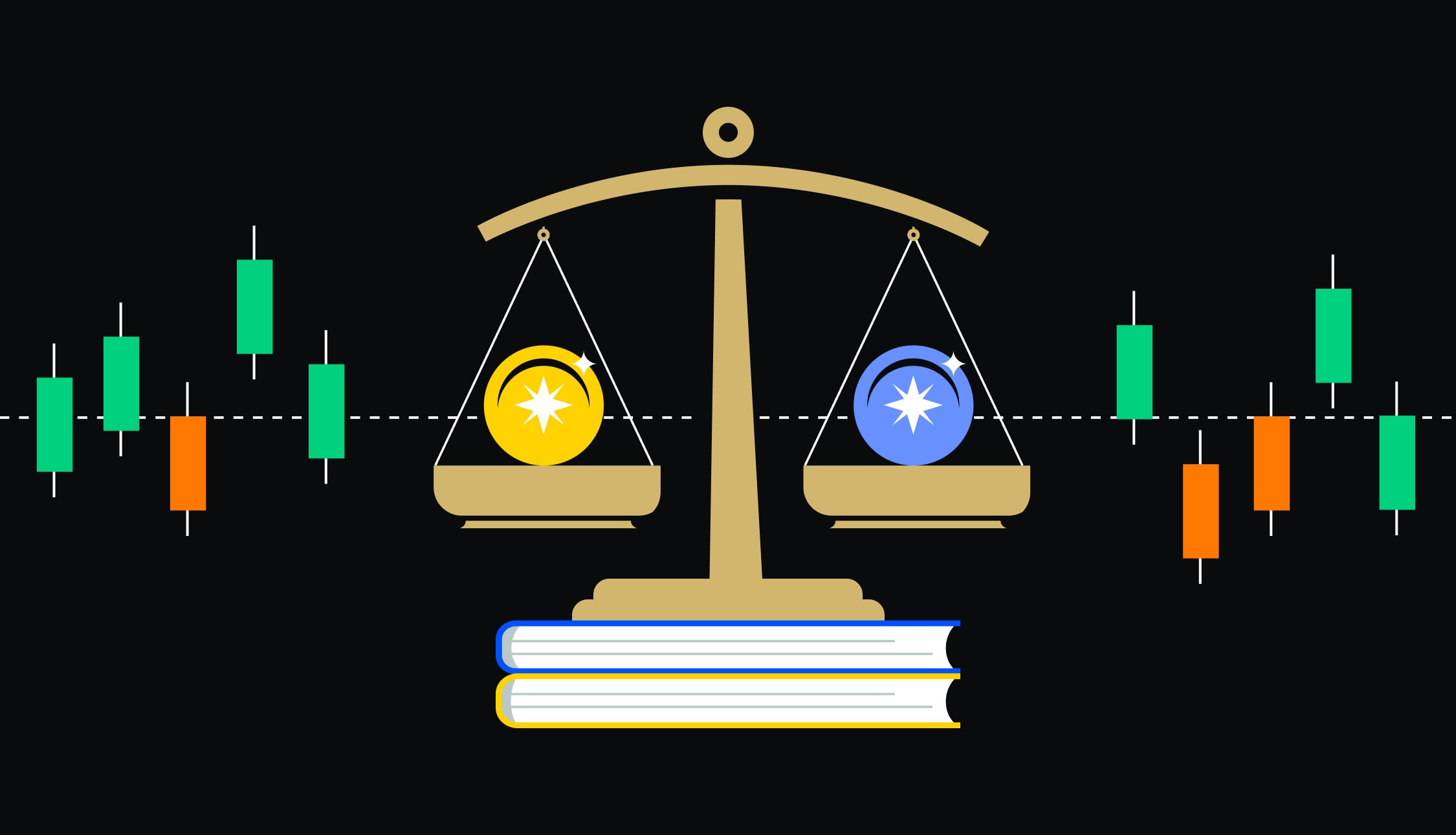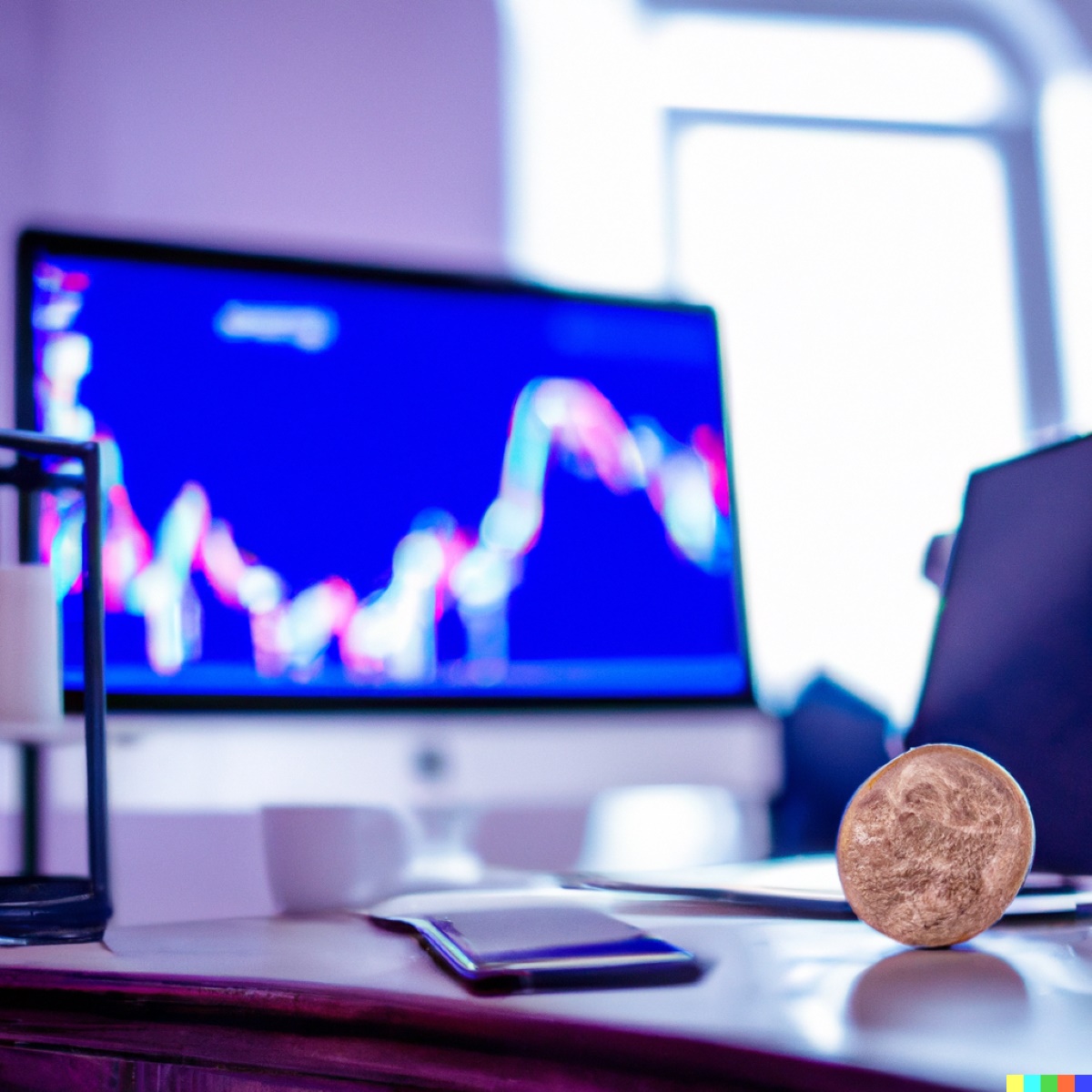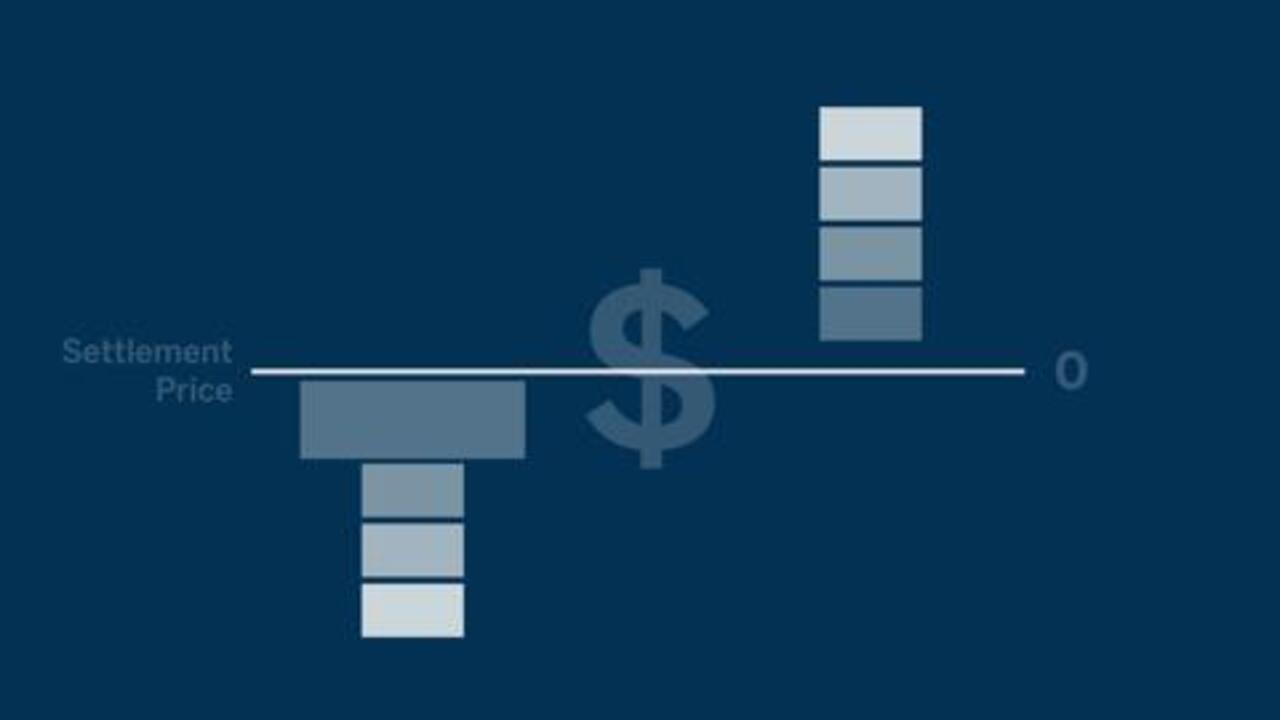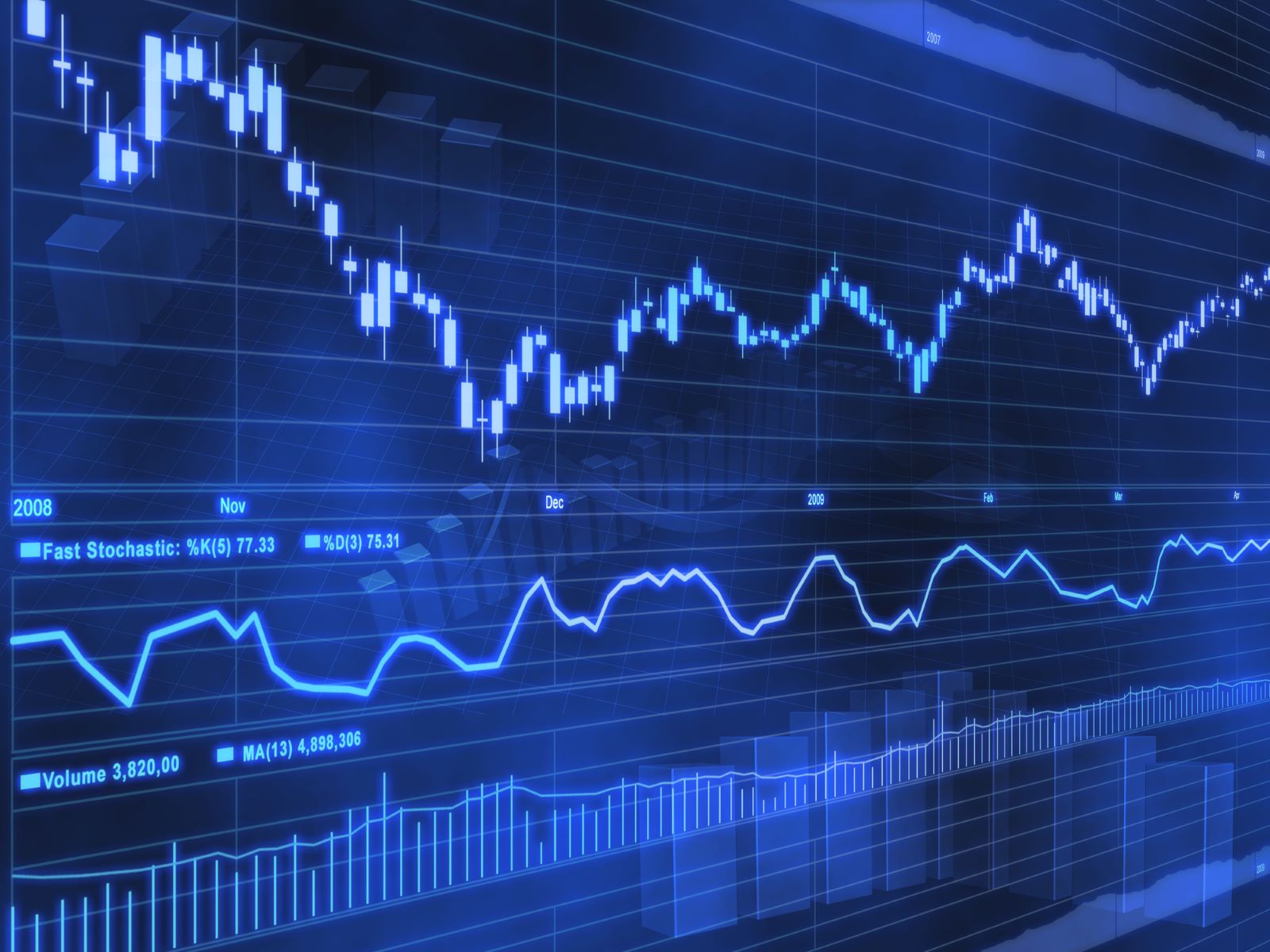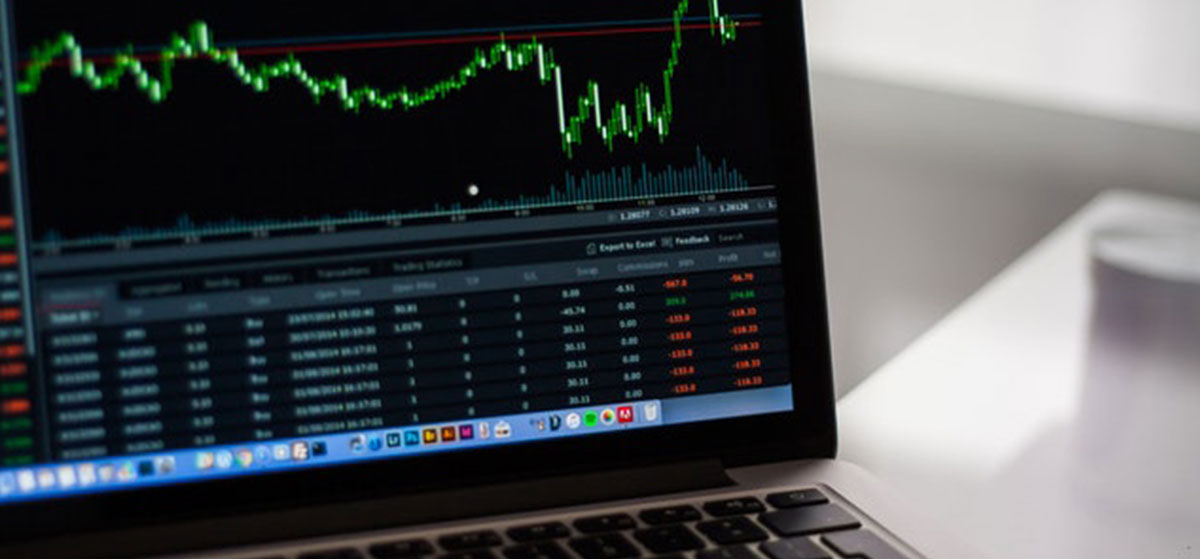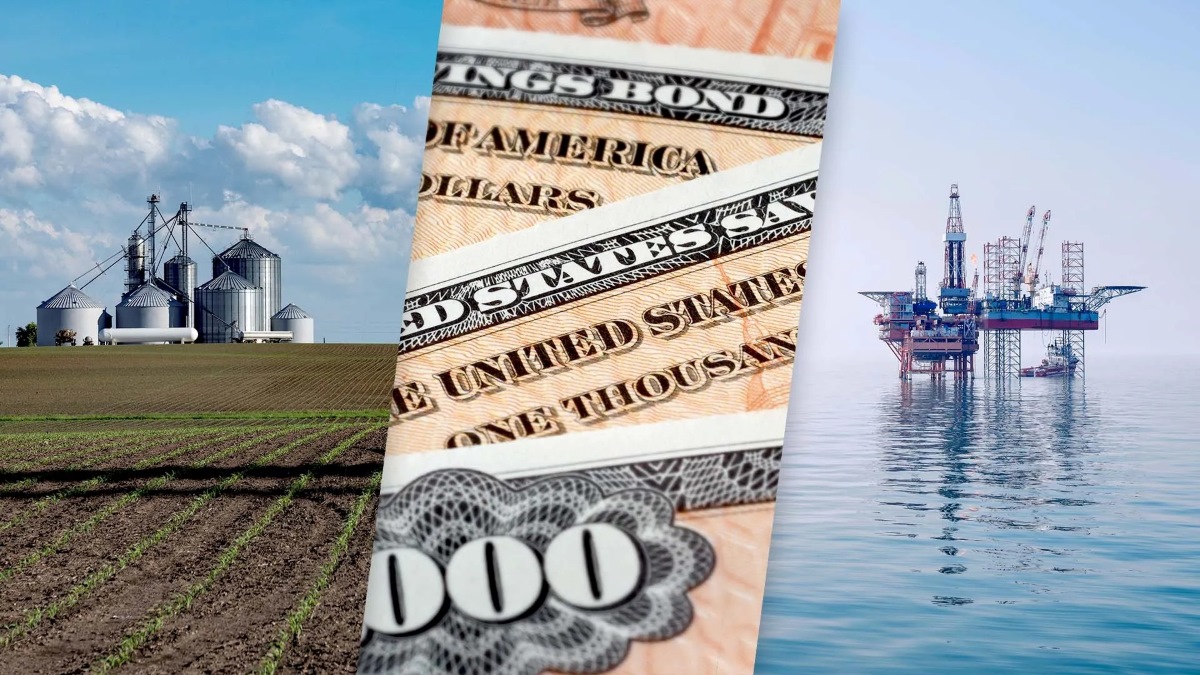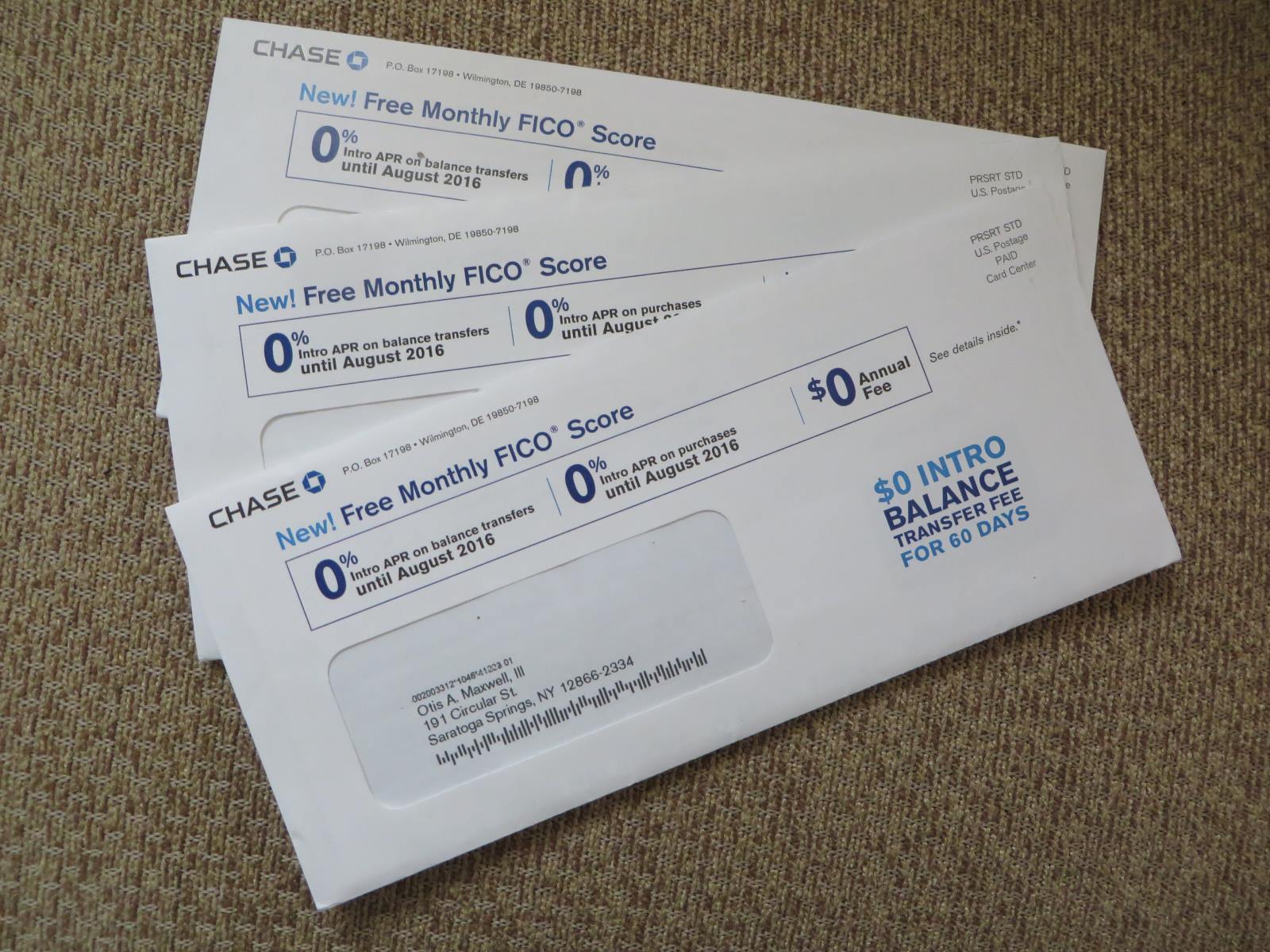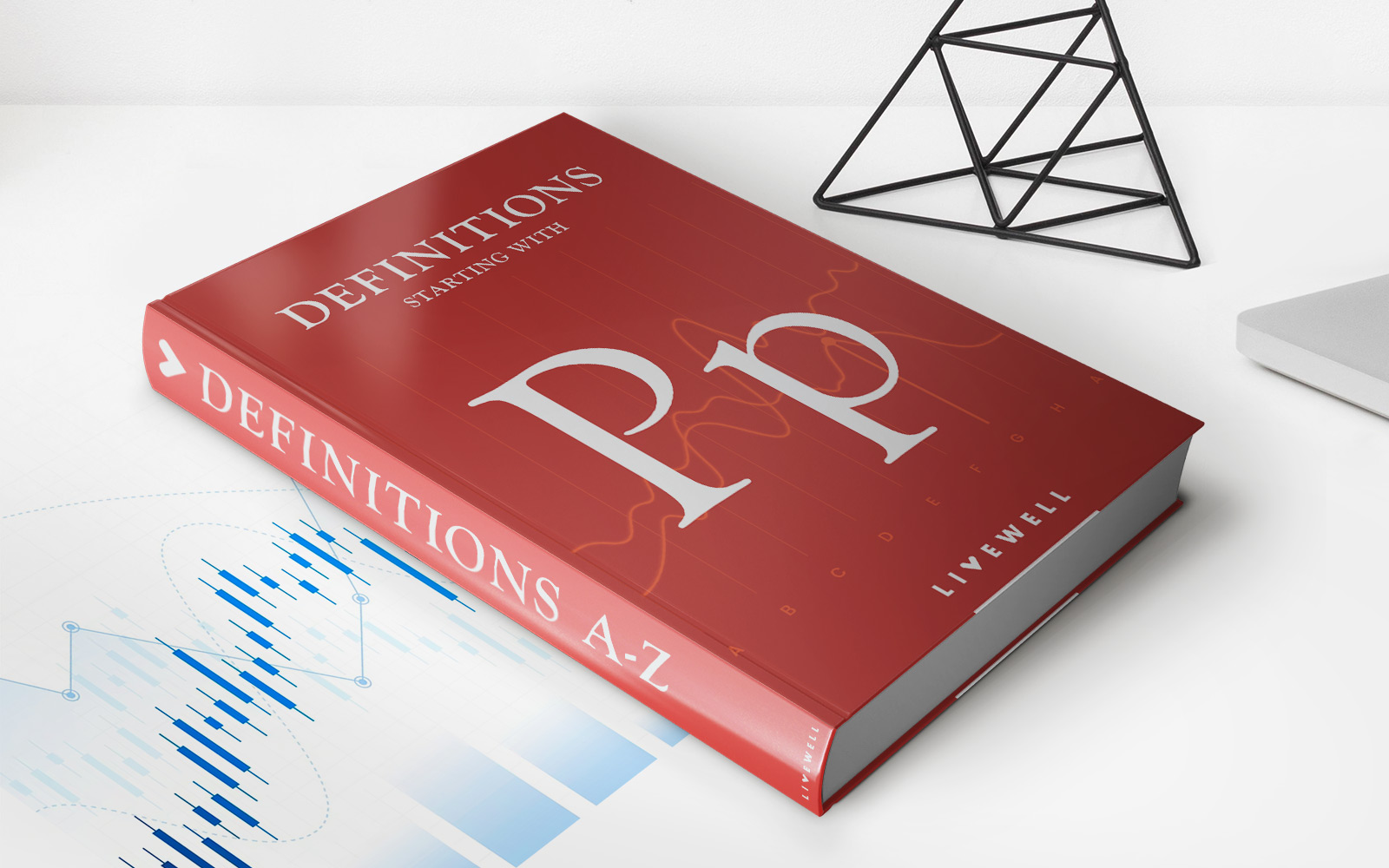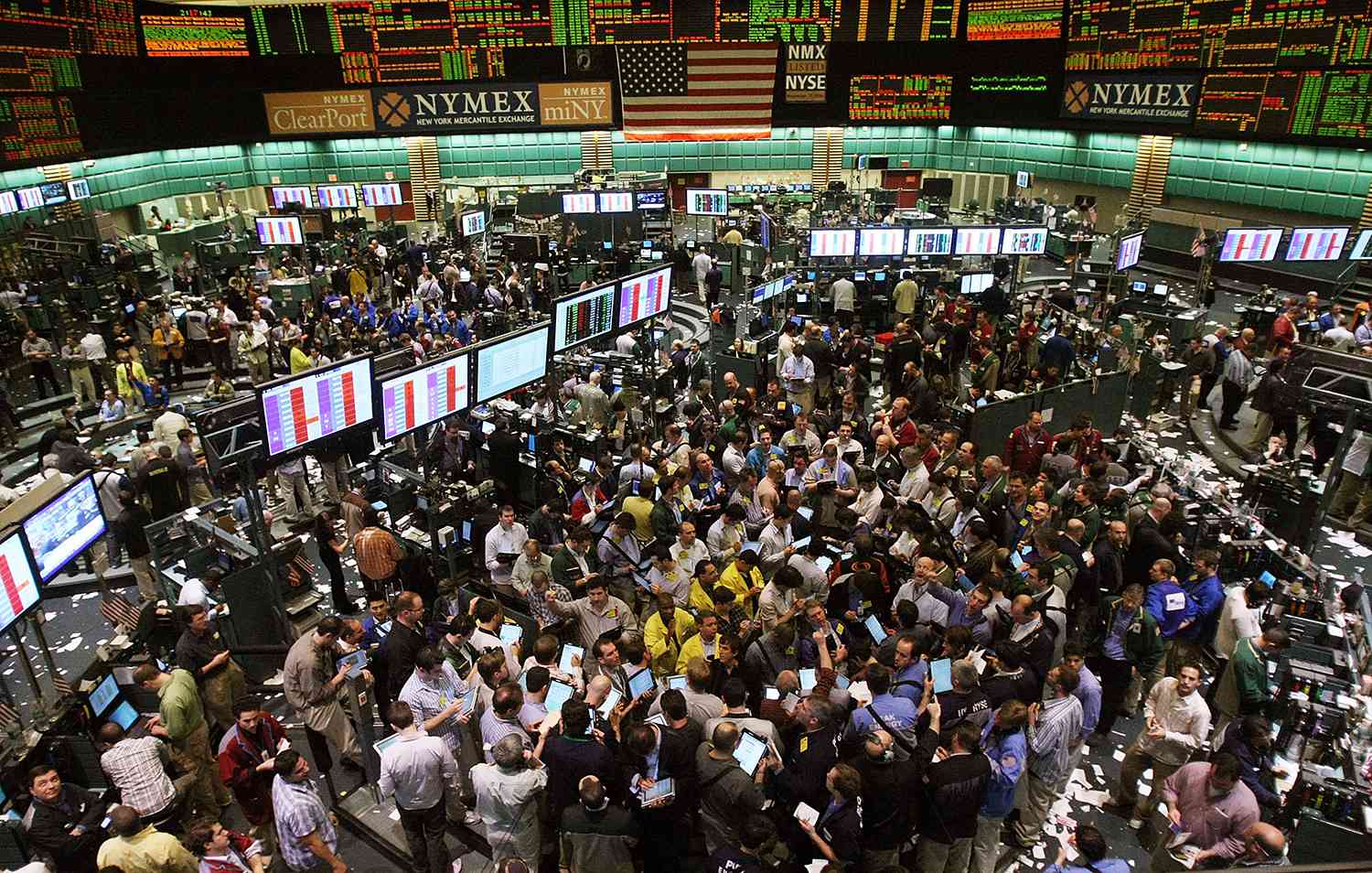

Finance
What Are NYMEX Futures Contracts?
Published: December 24, 2023
Learn about NYMEX futures contracts and how they are used in the finance industry. Understand the mechanics and benefits of trading these financial instruments.
(Many of the links in this article redirect to a specific reviewed product. Your purchase of these products through affiliate links helps to generate commission for LiveWell, at no extra cost. Learn more)
Table of Contents
Introduction
In the world of finance, NYMEX futures contracts play a significant role. These contracts allow traders to buy or sell commodities and financial instruments at a predetermined price and date in the future. NYMEX, short for New York Mercantile Exchange, is one of the largest commodity futures exchanges globally, providing a platform for trading a wide range of commodities such as energy products, including crude oil, natural gas, and gasoline.
NYMEX futures contracts offer investors and hedgers the opportunity to trade these commodities in a regulated and transparent marketplace. They serve as risk management tools, allowing companies in various industries to stabilize commodity prices and protect against price fluctuations. Moreover, these contracts provide speculative traders with the opportunity to profit from market movements.
What sets NYMEX futures contracts apart is their standardized nature. Each contract represents a specific quantity of the underlying commodity, with standardized delivery dates and locations. This uniformity ensures liquidity and ease of trading, as there is a constant supply of contracts available for buying or selling.
This article aims to provide a comprehensive overview of NYMEX futures contracts, including how they work, popular contracts, benefits and risks associated with trading them, and the factors that influence NYMEX futures prices. Whether you are a novice trader looking to expand your knowledge or a seasoned investor seeking to diversify your portfolio, understanding NYMEX futures contracts is essential.
So, let’s dive into the fascinating world of NYMEX futures contracts and explore how they can offer opportunities for profit and risk management in the ever-evolving financial markets.
Overview of NYMEX Futures Contracts
NYMEX futures contracts are derivative financial instruments that allow traders to speculate on the price movements of various commodities and financial products. These contracts are standardized agreements to buy or sell a specific quantity of the underlying asset at a predetermined price on a future date.
The New York Mercantile Exchange (NYMEX) is one of the most prominent futures exchanges globally, offering a wide range of commodities for trading. The exchange operates as a marketplace where buyers and sellers come together to trade these standardized contracts.
There are two types of participants in NYMEX futures contracts: hedgers and speculators. Hedgers use futures contracts to mitigate the risk of adverse price fluctuations in the underlying asset. For instance, an airline may use NYMEX crude oil futures contracts to lock in prices and protect against potential increases in fuel costs. On the other hand, speculators aim to profit from price movements by taking positions in the futures market without actually needing the physical delivery of the underlying asset.
NYMEX futures contracts are typically traded on a margin basis, meaning traders are required to deposit a fraction of the total contract value as collateral. This margin serves as a performance bond, ensuring that obligations are met in case the futures position moves against the trader.
One of the key features of NYMEX futures contracts is their standardized nature. Each contract specifies the quantity and quality of the underlying asset, as well as the delivery dates and locations. For example, a NYMEX crude oil futures contract represents 1,000 barrels of crude oil of a specific grade, with delivery locations at designated terminals.
These standardized contracts allow for liquidity and ease of trading. Traders can buy or sell contracts without having to negotiate specific terms with each counterparty. Additionally, the standardization enables the creation of a robust secondary market, where contracts can be bought and sold before the delivery date.
Overall, NYMEX futures contracts provide investors and hedgers with a regulated and transparent platform to manage risk, speculate on price movements, and participate in the commodities and financial markets. Understanding how these contracts work is crucial for anyone looking to engage in futures trading or seeking exposure to the underlying assets they represent.
How NYMEX Futures Contracts Work
NYMEX futures contracts operate based on a standardized process that involves several key components:
- Contract Specifications: Each NYMEX futures contract has specific parameters, including the underlying asset, contract size, delivery location, and expiration date. These specifications ensure uniformity and facilitate trading in a regulated manner.
- Market Participants: The market participants in NYMEX futures contracts include hedgers, who seek to manage price risk, and speculators, who aim to profit from price fluctuations without needing the physical commodity. These participants interact through brokers or electronic trading platforms.
- Order Placement: Traders can place orders to buy or sell NYMEX futures contracts either electronically or through a broker. They specify the desired contract, price, quantity, and order type (market order or limit order).
- Price Discovery: NYMEX futures prices are determined through an open and transparent auction process. Buyers and sellers submit their orders, and the market price is determined based on the highest bid and lowest offer that match. This process ensures fair and efficient price discovery.
- Margin Requirements: When traders enter into NYMEX futures contracts, they are required to deposit an initial margin as collateral. This margin is a fraction of the total contract value and serves to cover potential losses. Traders must maintain a minimum margin level to sustain their positions.
- Marking to Market: NYMEX futures contracts are marked to market daily, meaning that the gains or losses on the contract’s value are settled on a daily basis. If the contract moves in favor of the trader, they receive the profits, and if it moves against them, they are required to add additional margin funds.
- Delivery and Settlement: While NYMEX futures contracts allow for physical delivery of the underlying asset, the majority of contracts are settled before expiration through offsetting trades. Traders can close their positions by entering into an opposite transaction. For example, a trader who initially sold a futures contract can buy an equal number of contracts to close their position.
It is important to note that most NYMEX futures contracts are traded for speculative purposes rather than intending to take delivery of the physical commodity. The primary objective is to profit from price movements by buying low and selling high or selling high and buying back at a lower price.
Overall, NYMEX futures contracts provide a structured and transparent mechanism for traders and investors to participate in the commodities and financial markets. By understanding how these contracts work and the mechanics involved, market participants can effectively navigate and capitalize on opportunities presented by price fluctuations.
Popular NYMEX Futures Contracts
The NYMEX offers a wide range of futures contracts on various commodities and financial instruments. Here are some of the popular NYMEX futures contracts:
- Crude Oil: NYMEX crude oil futures contracts are among the most actively traded contracts globally. They represent the opportunity to buy or sell a specified quantity of crude oil at a predetermined price on a future date. These contracts provide exposure to the fluctuations in the price of crude oil, a vital energy commodity.
- Natural Gas: Natural gas futures contracts on the NYMEX offer traders a way to participate in the natural gas market. They provide exposure to the price movements of natural gas, which is an essential energy source used for heating, electricity generation, and industrial processes.
- Gold and Silver: NYMEX futures contracts also cover precious metals such as gold and silver. These contracts allow traders to speculate on the prices of these metals or hedge against potential price fluctuations. Gold and silver futures are popular among investors looking to diversify their portfolios or protect against inflation.
- Platinum and Palladium: NYMEX offers futures contracts on platinum and palladium, which are precious metals primarily used in the automotive industry and jewelry manufacturing. These contracts provide exposure to the price movements of these metals and offer opportunities for hedging and speculation.
- Gasoline: Gasoline futures contracts on the NYMEX enable traders to take positions in the gasoline market. These contracts reflect the price fluctuations of gasoline, a significant energy product used in transportation and other industries. Gasoline futures are influenced by factors such as supply and demand dynamics and geopolitical events.
- Copper: NYMEX copper futures contracts allow traders to participate in the copper market. Copper is a key industrial metal widely used in construction, electrical wiring, and manufacturing. These contracts provide exposure to copper prices and enable hedging against copper price volatility.
These are just a few examples of the many NYMEX futures contracts available. Each contract represents a unique market and trading opportunity, attracting a diverse range of market participants.
It is important for traders and investors to thoroughly research and understand the underlying fundamentals of each commodity or financial instrument before trading these futures contracts. By staying informed about market trends, supply and demand factors, and geopolitical events, participants can make more informed decisions and potentially profit from their trading strategies.
Benefits of Trading NYMEX Futures Contracts
Trading NYMEX futures contracts offers several benefits to both hedgers and speculators. Here are some significant advantages of participating in these markets:
- Risk Management: For hedgers, NYMEX futures contracts provide an effective tool for managing price risk. Companies involved in industries such as energy, agriculture, and metals can use these contracts to lock in prices for the underlying commodities, protecting against potential price fluctuations. This allows businesses to plan their operations with more certainty and stability.
- Liquidity: NYMEX futures contracts are highly liquid, meaning there is a ready market of buyers and sellers. The standardized nature of these contracts and the constant participation from market participants ensure that there is always sufficient liquidity for trading. This allows traders to enter and exit positions easily without worrying about finding a counterparty.
- Price Discovery: NYMEX futures markets provide a transparent and efficient mechanism for price discovery. The constant trading activity and participation from a diverse range of market participants help establish fair and competitive prices. Traders can rely on these prices to assess the value of the underlying commodities and make informed trading decisions.
- Leverage: Futures trading allows participants to control a larger position with a relatively small investment. NYMEX futures contracts are typically traded on margin, meaning traders only need to deposit a fraction of the total contract value. This amplifies the potential returns on investment, allowing traders to maximize their profits with a smaller capital outlay.
- Portfolio Diversification: Including NYMEX futures contracts in a well-diversified portfolio can help spread investment risk. The correlation between the price movements of these contracts and other asset classes may be different, providing an opportunity to reduce overall portfolio volatility and potentially enhance returns.
- Profit Potential: Speculators can participate in NYMEX futures markets to profit from price movements in the underlying commodities without actually needing to own the physical asset. Traders can take advantage of both upward and downward price movements, potentially generating significant profits if they correctly forecast market trends.
It is important to note that while there are benefits to trading NYMEX futures contracts, there are also risks involved. It is crucial for traders and investors to understand these risks and conduct thorough research and analysis before engaging in futures trading. Proper risk management strategies and staying informed about market trends are essential components of successful futures trading.
Overall, NYMEX futures contracts offer market participants an efficient and regulated platform to manage risk, speculate on commodity prices, and enhance their investment strategies. Whether it is for hedging purposes or seeking profit opportunities, trading NYMEX futures contracts can be an integral part of a well-rounded financial portfolio.
Risks Associated with NYMEX Futures Contracts
While NYMEX futures contracts offer numerous benefits, it is crucial to understand the risks involved before engaging in futures trading. Here are some of the key risks associated with trading NYMEX futures contracts:
- Price Volatility: Commodity prices, which underlie NYMEX futures contracts, can be highly volatile. Price fluctuations can be influenced by various factors such as geopolitical events, weather conditions, supply and demand dynamics, and market speculation. Traders must be prepared for significant price swings that can result in substantial gains or losses.
- Leverage Risk: Trading futures contracts involves the use of leverage, which amplifies both potential profits and losses. While leverage allows traders to control a larger position with less capital, it also increases the risk of significant losses if the market moves against them. It is important for traders to manage their risk effectively and set appropriate stop-loss orders to limit potential losses.
- Liquidity Risk: While NYMEX futures contracts are generally highly liquid, there may be instances of decreased liquidity, particularly in less actively traded contracts or during periods of extreme market volatility. Low liquidity can result in wider bid-ask spreads and difficulty in entering or exiting positions at desired prices. Traders should be aware of liquidity conditions and take them into consideration when executing trades.
- Margin Calls: Trading NYMEX futures contracts involves margin requirements, meaning traders are required to deposit a portion of the total contract value as collateral. If the market moves against a trader’s position, they may receive a margin call, requiring additional funds to maintain the position. Failure to meet margin requirements can result in position liquidation and potential losses.
- Delivery Risk: While most NYMEX futures contracts are settled before the delivery date through offsetting trades, there is still a risk of physical delivery for those who hold contracts until expiration. The delivery process involves logistics, storage costs, and potential quality discrepancies. Traders should be aware of the specific terms and conditions of the contracts they are trading and understand the implications of potential delivery.
- Market Risk: Trading any financial instrument involves general market risk. Price movements can be influenced by a wide range of factors, including global economic conditions, political events, regulatory changes, and unforeseen events. Traders should stay informed about market trends and conduct thorough analysis before making trading decisions.
It is important for traders to have a solid understanding of risk management techniques and implement appropriate strategies to mitigate these risks. This includes setting stop-loss orders, diversifying trading positions, staying informed about market developments, and continually monitoring and adjusting trades as necessary.
By being aware of the risks associated with NYMEX futures contracts and taking proactive measures to manage them, traders can navigate the futures markets with greater confidence and potentially achieve their trading objectives.
Factors Affecting NYMEX Futures Prices
The prices of NYMEX futures contracts are influenced by a variety of factors, both fundamental and market-related. Understanding these factors can help traders make informed decisions and better anticipate price movements. Here are some key factors that can affect NYMEX futures prices:
- Supply and Demand: The fundamental forces of supply and demand play a significant role in determining commodity prices. Factors such as production levels, geopolitical events, weather conditions, and changes in economic activity can impact the supply and demand dynamics of the underlying commodities. For example, an increase in oil production or a decrease in demand for natural gas can exert downward pressure on NYMEX futures prices.
- Macroeconomic Indicators: Economic indicators, including GDP growth, inflation rates, interest rates, and employment data, can influence commodity prices. Changes in these macroeconomic factors can impact the overall demand for commodities and investors’ appetite for risk. For instance, a robust economy with increasing industrial activity may drive up demand for metals like copper, while a slowdown in economic growth may lead to decreased demand and lower futures prices.
- Storage and Inventory Levels: Inventory levels of commodities can have a significant impact on futures prices. When inventories are high, indicating a surplus, it can lead to downward pressure on prices as sellers try to offload excess supply. Conversely, low inventories or supply disruptions can cause prices to rise as buyers compete for limited supplies. Storage capacity and availability are crucial considerations in commodities like crude oil, natural gas, and agricultural products.
- Geopolitical Events: Political and geopolitical developments can have a significant impact on futures prices, especially for commodities with global supply chains. Events such as wars, conflicts, trade disputes, and sanctions can disrupt supply chains, affect production levels, and create uncertainties in the market. Traders closely monitor geopolitical news as it can lead to sudden price movements and heightened volatility.
- Weather Conditions: Weather patterns have a direct impact on the prices of certain commodities, particularly agricultural products and energy commodities. Droughts, floods, hurricanes, and extreme temperatures can affect crop yields, livestock production, electricity demand, and transportation of goods. Weather-related factors can result in short-term price fluctuations and supply disruptions.
- Speculative Trading: Speculators and investor sentiment can influence futures prices through their buying and selling activities. Speculators aim to profit from short-term price movements and may contribute to increased volatility in the market. Changes in investor sentiment, market sentiment, and risk appetite can drive prices beyond the fundamental supply and demand factors.
It is important to note that these factors can interact and influence each other, creating complex dynamics in the futures markets. Traders should consider a holistic view of these factors when analyzing NYMEX futures prices and developing trading strategies.
By staying informed about these factors and monitoring their impact on commodity markets, traders can improve their ability to anticipate price movements and make more informed trading decisions in the NYMEX futures markets.
Conclusion
NYMEX futures contracts offer traders and investors a regulated and transparent platform to participate in the commodities and financial markets. These standardized contracts provide opportunities for profit, risk management, and portfolio diversification. Understanding how NYMEX futures contracts work and the factors that affect their prices is crucial for anyone looking to engage in futures trading or seeking exposure to the underlying commodities.
In this article, we explored the fundamentals of NYMEX futures contracts, including their standardized nature, the role of hedgers and speculators, and the process of trading these contracts. We discussed popular NYMEX futures contracts on commodities such as crude oil, natural gas, gold, and others, highlighting the diverse range of opportunities available.
We also examined the benefits of trading NYMEX futures contracts, such as risk management, liquidity, leverage, price discovery, and portfolio diversification. However, it is important to acknowledge the risks associated with futures trading, including price volatility, leverage risk, liquidity risk, and delivery risk. Traders must have a solid risk management strategy in place to navigate these risks effectively.
Lastly, we explored the factors that can influence NYMEX futures prices, such as supply and demand dynamics, macroeconomic indicators, storage and inventory levels, geopolitical events, weather conditions, and speculative trading. Understanding these factors allows traders to make more informed decisions and anticipate potential price movements.
In conclusion, NYMEX futures contracts play a vital role in the global financial markets, offering opportunities for profit and risk management. Traders and investors must arm themselves with knowledge, conduct thorough research, and stay informed about market trends to navigate the dynamics of the NYMEX futures markets successfully. By combining expertise, strategy, and risk management, individuals can harness the potential of NYMEX futures contracts to achieve their financial goals.
